So you want to turn your miniature painting hobby into “a real job”? Tabletop gaming has been around for centuries, but the advent of miniature painting has allowed for a greater level of immersion in these games. As long as people are gaming with miniatures, enjoying them in their various hobbies, there will always be a service market for painting miniatures. But can these artists really make a living doing this?
In this article, I explore the feasibility of turning your miniature painting abilities into a full time job. In other words: Can you paint miniatures full time and live off the salary, comfortably?

Key Points (TL;DR): Can you Make a LIving painting tabletop miniatures?
It’s possible to make a living painting miniatures, but it requires artistic talent, business skills, and hard work. Establishing a clear pricing structure and continuously improving your skills are key. While there are other factors to consider for long-term sustainability and growth, it’s definitely possible for an individual in the US to make a living with miniature painting.
Read on to learn more about what I found out researching whether a person can live with the sole income earned through miniature painting.
Introduction: About Miniature Painting
Let’s get started. You need to know a few basics about miniature painting before you can make the transition from hobbyist to professional.
Miniature painting is a form of art that involves creating detailed, intricate designs on small models and figurines typically used in tabletop gaming, e.g., Dungeons & Dragons (DND) or Warhammer 40k.
READ MORE: HISTORY 101 OF MINIATURE TABLETOP WARGAMING
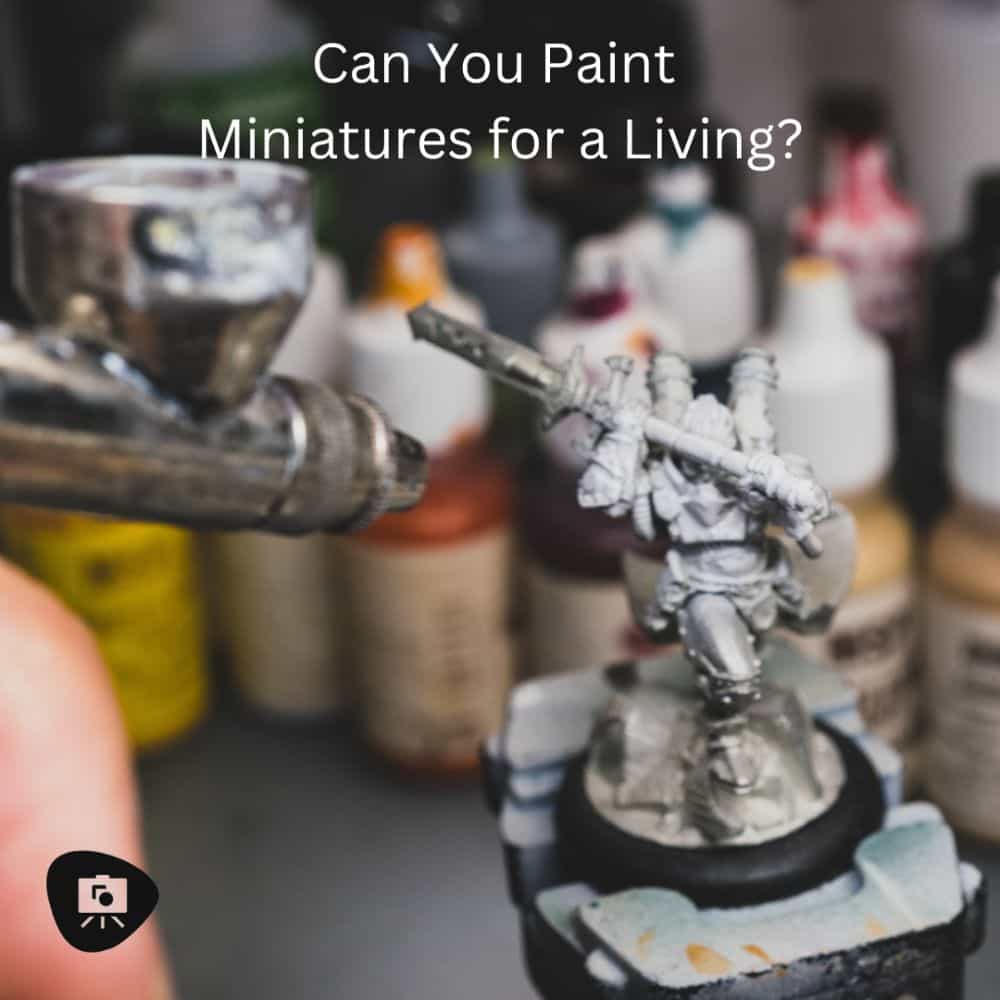
The art or hobby of painting miniatures requires quite a bit of skill and patience, as well as access to quality materials, including paints, brushes, and other tools. I’ve discussed a lot about the essentials for painting miniatures in other articles.
The most important thing to know is that miniature painting is a very niche art form and there aren’t many people who specialize in it. That means if you’ve got the skills, you can make some great money doing this for other people–I have.
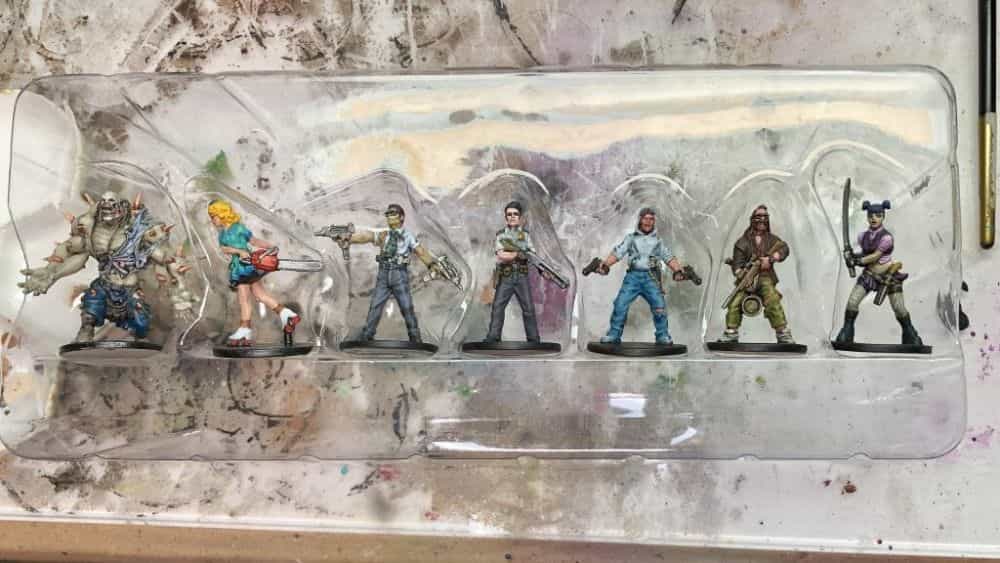
And maybe you’re one of those people who has dabbled already in commissioned miniature painting. But, now you’re wondering if you should take it all the way and quit your day job.
Well, so many factors will play into whether you can paint models for other people as a full time job with a salary that could support your life and lifestyle.
And that is the purpose of this article. Can we make that calculation upfront to reduce the risk of loss for you? Let’s take a look at the cost of entry and what it would take to make this a sustainable, full-time job.
What is a Living Wage?
As I’m writing from the perspective of someone in the United States, your personal situation may differ slightly. So I hope my line of reasoning keeps with core principles that you can use to understand your own situation and make the right decision for you.
For anyone reading, the obvious first question is:
“How much do I need to make painting miniatures full time to support my lifestyle?”

Well, there isn’t a universal answer here. Your life is your life, and you need certain things to live at a standard where you’re OK (however you define that).
In the United States, according to the most recent data in 2021 from a study at MIT, the living wage for a family of four in the United States is $24.16 per hour or $100,498.60 per year before taxes, based on specific expenditure data (for two working adults and two children).
For a single person, a decent salary would be at least $30,000-$40,000 per year to cover basic expenses. This of course doesn’t include hobby expenditures, e.g., going to the movies, tabletop gaming, and the other privileges of making more than a basic living income.
Calculations: Can You Make a Living Painting Miniatures?
Minimum wage requirements are heavily influenced by geography; with each state having its own sets of rules, the salary necessary to live comfortably will be higher than what is typically considered the “average base salary.”
Things like food, childcare, health care, housing, and transportation in a specific geographic area all have a role in determining what a person needs to survive on their income.
And things like taxes, healthcare, housing costs, or just weathering the ups and downs of a dynamic economy or job market can also affect the basic living wage a person needs.
How Much Money Do I Need to Be Comfortable?
Now, I’m not an accountant or a financial advisor. So please perform your own calculations and research when making any major decisions about your life or career, especially those involving money and finances.
With all these calculations in play (shown above), I would have to assume that most of us will want to have at least double the minimum wage to feel financially secure with enough leftover for retirement.

Assuming a single person is looking to make miniature painting their full-time job in order to feel financially secure, they would need to earn $60,000-$80,000 per year before taxes.
For reference, here are ten traditional occupations in the United States that typically provide an annual salary of between $60-80k:
- Software developer
- Registered nurse
- Financial analyst
- Marketing manager
- Human resources manager
- Physical therapist
- Occupational therapist
- Speech-language pathologist
- Environmental scientist and specialist
- Mechanical engineer
Can I Support a Family Painting Miniatures?
Note that any estimate for an individual does not hold true for the family of four scenario, as you would now have to assume both heads of household (two working adults) are bringing in an income. In this scenario, remember that the total to live comfortably may not be a linear extrapolation.

Instead, I would say that 1.2-1.5x of the minimum estimate for a livable salary could be sufficient for most families–with one member working full time as a miniature painter. Here, a total income for a family of four before taxes of $120,000-$150,000 per year could be adequate to live comfortably in the United States.
But, given that complexities of calculating the living expenses of a family over a single person, for the purposes of this article, I’ll focus only on the needs and feasibility of a single individual supporting themselves with a miniature painting business.
Note: There are other ways to earn with your miniature painting skill, including working with a company studio. Here, you could draw a full time salary with benefits, etc., as you would any other job. In this discussion, however, I’m writing from the perspective of the self-proprietor, the individual freelancer, who has decided (or is considering) to take the plunge into miniature painting for a living.
How Much Would You Need to Charge to Paint Miniatures?
Well, you’re going to have to do some calculations based on a few assumptions. Let’s take a closer look.
- Firstly, the painter should factor in their hourly rate for the time it takes to complete a project. This can vary depending on their skill level and experience, but for the sake of this example, let’s assume a rate of $15 per hour. Alternatively, you could “charge by project” (more about this below).
- Secondly, the cost of materials must be taken into account. This can include the cost of the miniature, the paint, the brushes, and any other materials used in the process.
- Lastly, the painter should factor in any overhead costs associated with running their business, such as studio rent or the cost of a website.
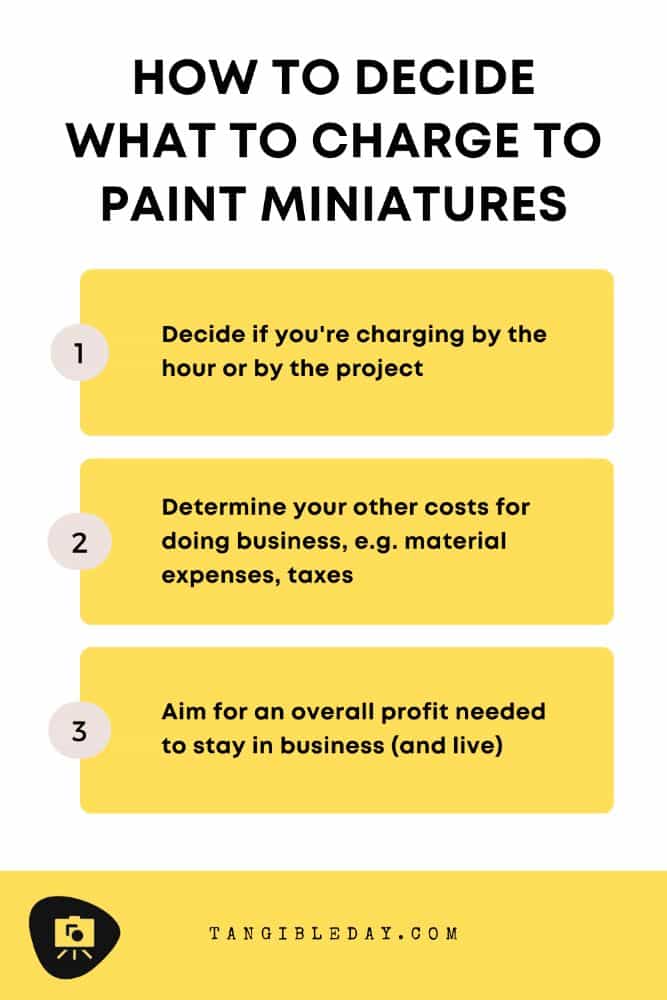
With these factors in mind, let’s calculate how much a miniature painter should charge for their work to bring in $60,000-$80,000 per year before taxes.
To make this easier to understand, we’ll compare the feasibility of painting miniatures through charging clients “per hour” versus “per project”. Which is better?
Charge “by the Hour” to Paint?
If a miniature painter charges a rate of $15 per hour (the minimum hourly wage in the US for many cities) and can paint one miniature per hour, they would need to adjust their pricing pretty heavily to earn the $60-80k per year.
(It’s a bit insane, but we’re being hypothetical for fun)
Assuming they work 8 hours a day, 5 days a week, 50 weeks per year, and complete one miniature per hour, they would need to charge between $120-$160 per miniature to earn the desired income range of $60,000-$80,000 per year before taxes.

Okay, that’s crazy, right? I don’t know of many clients who would pay $120-160 per model unless it was large, complicated, or painted to a very high standard. And only the top, most skilled, recognized miniature painters would be able to command such a high price for their service on any regular basis.
Hmm…That doesn’t sound good.
But, let’s try this again with a new assumption: You can paint 10 miniatures per hour. This would allow you to be more competitive and lower the price you charge. Working 8 hours a day, 5 days a week, 50 weeks per year, and complete 10 miniatures per hour, you would need to paint 3,000-4,000 miniatures per year.
This is doable, I think, depending on the job and projects you accept. Of course, there’s almost no room for downtime here, and you’d need to be strategic with the projects that you take on. You’ll be a factory worker essentially, and in this regard you’d need to adjust your expectations on the quality of work.
To earn an income of $60,000-$80,000 per year before taxes, a miniature painter would need to charge between $20-$27 per miniature if they can paint 10 miniatures per hour. This is still pretty ambitious but more realistic than the previous example.
I can paint fast and efficiently. I’ve done it, but it’s not pretty.
Charge “per miniature” painting project?
Well, given the challenges of charging clients for your painting services by the hour, maybe you’d be better off charging a flat fee for each project.
This is more common for typical freelance work, and it does have its advantages. For instance, you’d only need to paint 10-20 large projects per year to make the desired income range of $60-$80k before taxes.
In other words, charging on a per-project basis can be an effective way for you to understand how to earn a livable wage. You can assess the time and materials for each project, independently, then use that scope of work to create a price structure that accounts for your desired income range and any other associated cost.
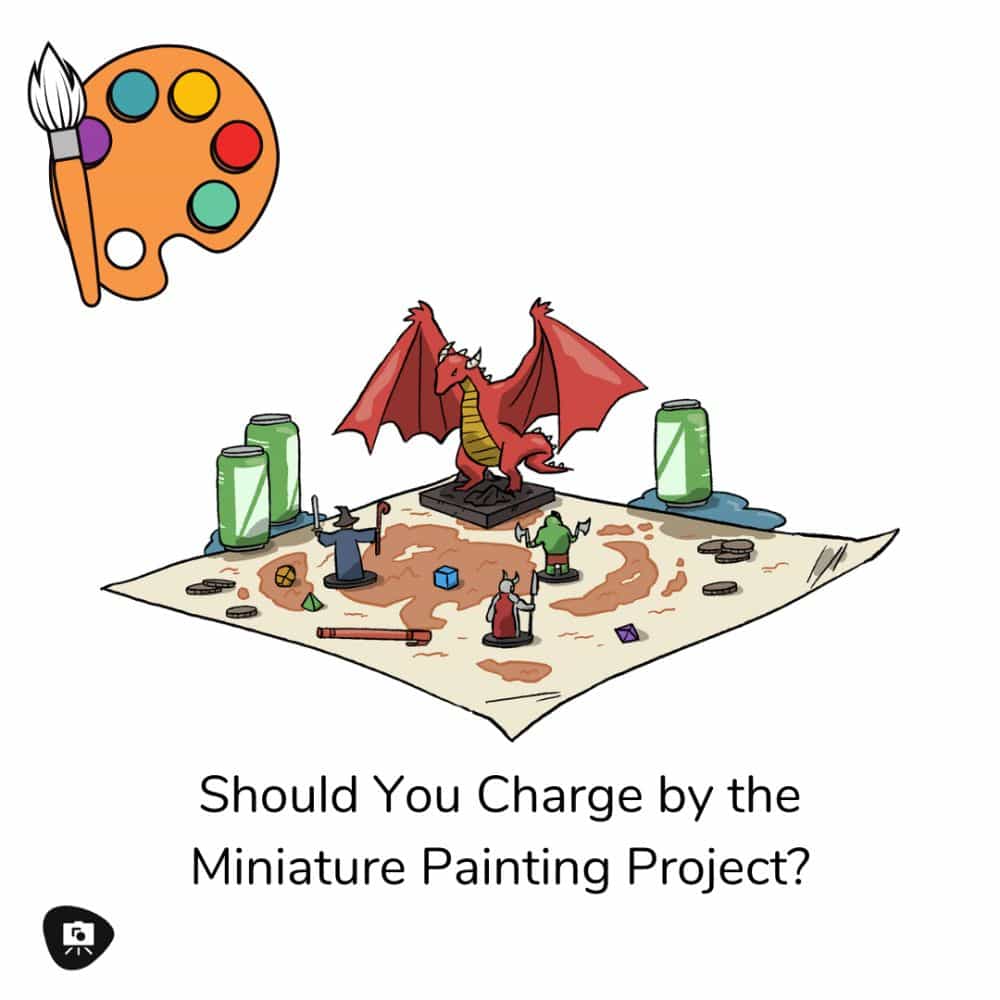
For example, as a commissioned miniature painter, you may charge $500 for “a project” that requires 10 hours of work and $50 in materials. Assuming the painter completes two similar projects per week, they would earn an income of $52,000 before taxes, which is close to the desired range we previously calculated.
What is a “Project”?
Sure, you’d have to define what a project means in this case.
“A project” could be 1-25 models, or a series of small conversion projects (each bringing in at least $500 per 2 days or so). It’s whatever the client needs are in this case. But given you have a perspective on time and materials before you accept the project, this can be a better way for miniature painters to earn an income.
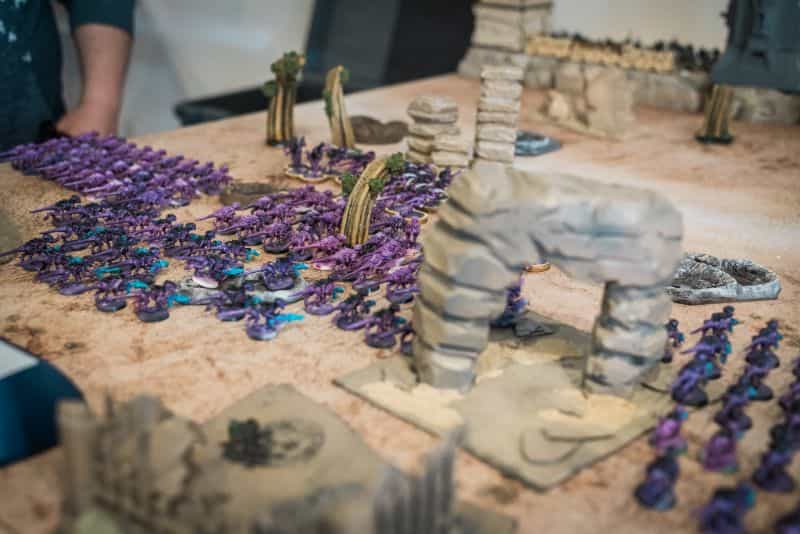
A good reason why charging by miniature painting project can be beneficial is the potential for earning higher rates for more complex projects. For example, a client may request a project that requires additional detailing, such as painting intricate designs or adding custom features.
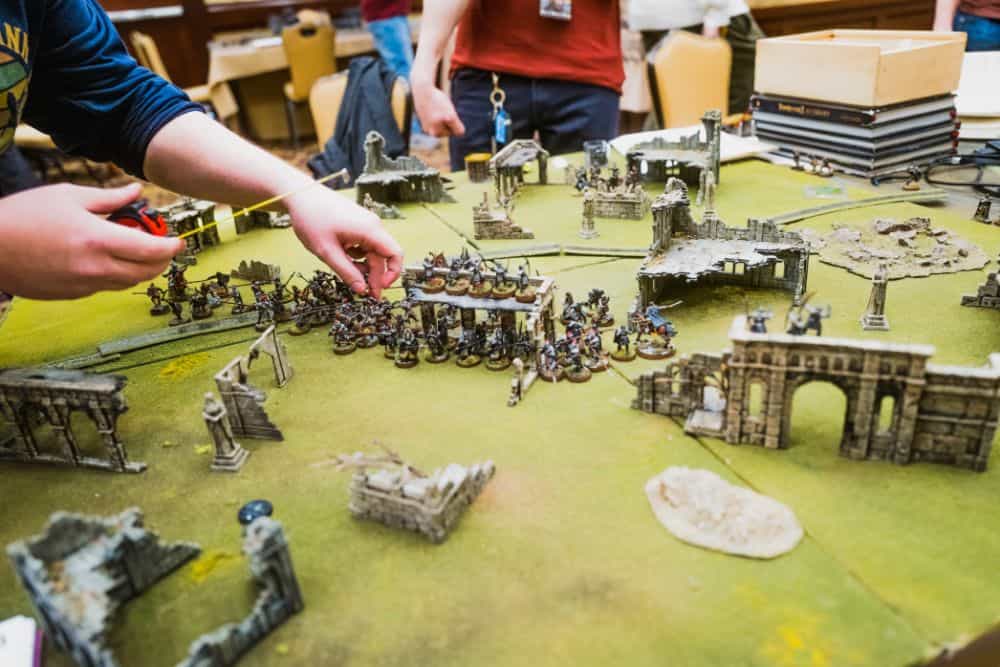
In these cases, the painter can charge a higher rate to account for the additional time and materials required. By negotiating a fair rate with the client based on the complexity of the project, the painter can earn a higher income for their specialized skills and attention to detail.
Summary Calculations: Hourly- and Project-Based Miniature Painting Costs and Amounts
| Calculations | Amount |
|---|---|
| Comfortable living wage for a single person in the United States | $60,000 – $80,000 |
| Hourly rate to make $60,000 per year (40 hours per week, 50 weeks per year) | $30.00 |
| Hourly rate to make $80,000 per year (40 hours per week, 50 weeks per year) | $40.00 |
| Rate per miniature to make $60,000 per year (assuming 1 miniature painted per day, 5 days per week) | $150.00 |
| Rate per miniature to make $80,000 per year (assuming 1 miniature painted per day, 5 days per week) | $200.00 |
| Rate per miniature to make $60,000 per year (assuming 1 miniature painted per hour) | $30.00 |
| Rate per miniature to make $80,000 per year (assuming 1 miniature painted per hour) | $40.00 |
| Rate per miniature for a project-based pricing model (assuming $100 for 5 miniatures painted to a specific standard, 10 hours of work, and $5 in materials per project) – $60k annual revenue | $19.00 |
| Rate per miniature for a project-based pricing model (assuming $250 for 10 miniatures painted to a specific standard, 20 hours of work, and $10 in materials per project) – $80k annual revenue | $23.00 |
Charging by project allows you to take on multiple income streams
This is important to understand for any freelancer. When you charge by project, you can take on multiple income streams.
Instead of being limited to a single type of job, such as painting miniatures all day every day, you can accept a variety of commission projects that keep your skills sharp and allow you to explore different avenues for earning an income.
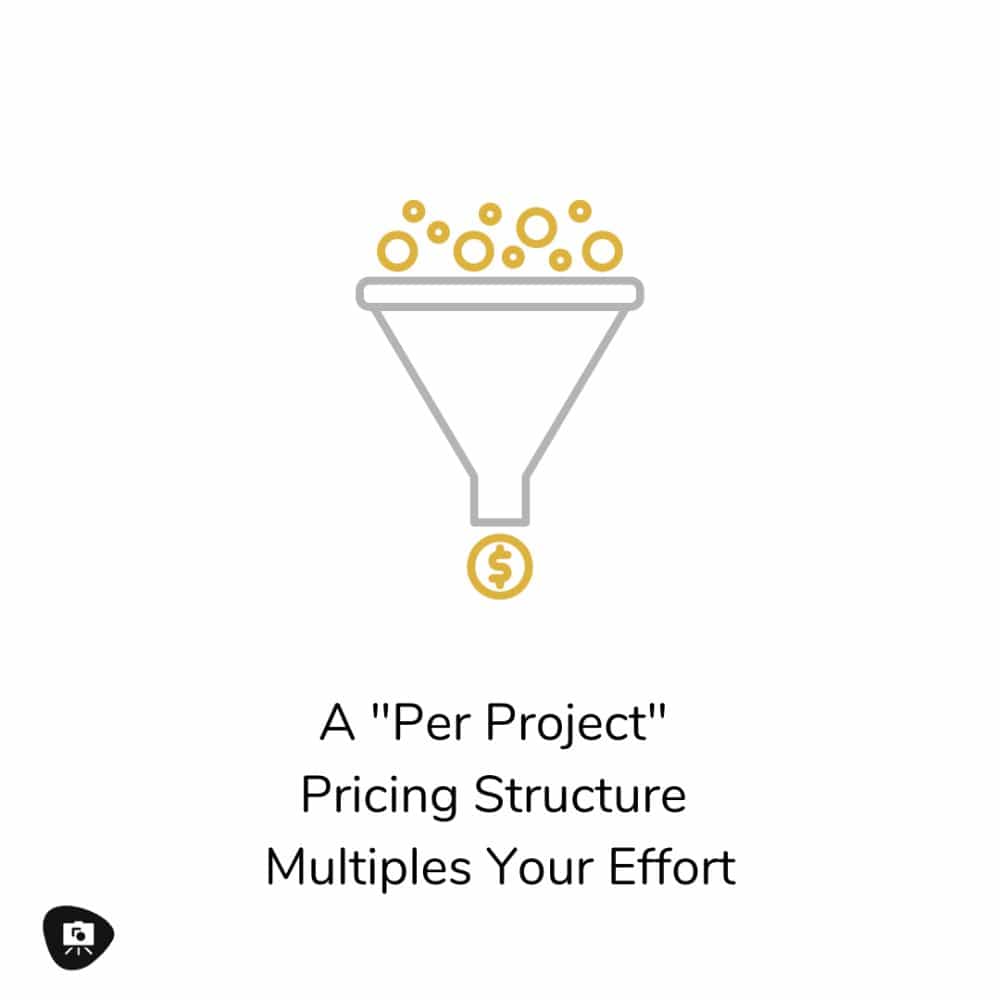
Importantly, a by project service can allow the painter to work on multiple projects at once, which can increase their overall income potential.
By carefully managing their time and resources, the painter can take on multiple projects at different stages of completion, allowing them to maximize their earning potential and hit that annual revenue requirement (which we set it at $60-80k).
REMEMBER THESE HELPFUL ASSUMPTIONS: You’re taking vacations and time off from “work” in the painting studio. If you’re able to work more, then you could be more competitive with your pricing. Moreover, note that we’re assuming that you need a $60k-80k annual salary for a comfortable lifestyle. If you don’t need to make this much, and the minimum livable annual wage is closer to $40,000 in the US, then you can reduce your workload and/or your price structure.
What’s better a per hour or per project pricing structure?
In my opinion both ways of bringing in income with miniature painting will be useful depending on your situation. I’ve used both, at different times, and I can tell you now that I work best with a per project structure.
Of course, I don’t paint miniatures as a full time job, or even close to that level of dedication. If you’re serious about trying to do this full time, you’ll want to dig deep into what you’re able to do with your time and skill.
Here are the pros and cons of both pricing approaches:
Per Hour Pricing
- Provides a clear and simple pricing structure for clients
- Can be easier to calculate for simpler projects
- Allows for greater flexibility in pricing adjustments for projects with varying levels of complexity
- May not accurately reflect the true value of the work and skill required
- Can incentivize painters (you) to work more slowly in order to increase their pay
- May lead to lower overall earnings due to the limited number of hours in a day
Per Project Pricing
- Reflects the true value of the work and skill required for each project
- Can provide greater earning potential for more complex projects
- Allows for greater flexibility and earning potential by working on multiple projects at once
- Can be difficult to accurately estimate time and material costs for each project
- May require additional negotiation with clients for each project, which can be time-consuming
- Can lead to lower earnings if the painter underestimates the time and material costs for a project
If you’re wondering which pricing structure is better for a commissioned miniature painter, here’s what I think:
Painters who are only beginning or still growing their reputation and portfolio should consider a per hour pricing structure. This kind of framework offers a straightforward, easy-to-understand cost plan that makes it easier to entice new customers and sustain existing ones.

Moreover, this hourly payment model can be adapted for more uncomplicated assignments which allows you to appeal to different types of clients with adjusted prices. You’ll learn more quickly. You can pick and choose, and figure out what you don’t like doing, how efficient you are, and all sorts of other things that will help you in the long run.
On the other hand, for painters who have developed a strong reputation and portfolio within the community, a per project pricing structure may be more beneficial. This structure allows for greater earning potential for more complex projects, and allows for greater flexibility and earning potential by working on multiple projects at once.
Per project pricing also allows for more accurate reflection of the true value of the work and skill required, which can help to attract higher-paying clients. It took me years to start doing the project-based approach because I needed to trust that it would work.
Summary: Although the per-hourly approach for charging for your services may work fine in the beginning, the project-based pricing structure may be easier to implement and sustain in the long run, especially for the person looking to paint miniatures as a full time job. Overall, with the right combination of projects, materials, and rates, I believe it is possible to achieve the salary range that allows a person to paint models full time.
| Calculation | Amount |
|---|---|
| Annual living wage for a single person in the United States | $60,000 – $80,000 |
| Hourly rate to make $60,000 per year (40 hours per week, 50 weeks per year) | $30.00 |
| Hourly rate to make $80,000 per year (40 hours per week, 50 weeks per year) | $40.00 |
| Rate per miniature to make $60,000 per year (assuming 1 miniature painted per day, 5 days per week) | $150.00 |
| Rate per miniature to make $80,000 per year (assuming 1 miniature painted per day, 5 days per week) | $200.00 |
| Rate per miniature to make $60,000 per year (assuming 1 miniature painted per hour) | $30.00 |
| Rate per miniature to make $80,000 per year (assuming 1 miniature painted per hour) | $40.00 |
| Rate per miniature for a project-based pricing model (assuming $100 for 5 miniatures painted to a specific standard, 10 hours of work, and $5 in materials per project) | $19.00 |
| Rate per miniature for a project-based pricing model (assuming $250 for 10 miniatures painted to a specific standard, 20 hours of work, and $10 in materials per project) | $23.00 |
Reasons You want to charge less for your work
Reputation. At first glance, charging less for your work at a lower rate of pay may be counter-intuitive. But, let’s consider a few reasons why it might actually be beneficial:
1. Establish a reputation for quality and reliability
Charging less for your services can help you build a reputation as a reliable miniature painter with quality work. Word of mouth will spread quickly, helping to increase demand and build up a portfolio that reflects the skill level of your artistry.
You may not want to do this frequently. But, things like “Spring Sales” or “Holiday Discount Services” may bring in new clients who are willing to pay more for quality work once they recognize the talent you possess.
2. Expand your network and client base
As above, charging less can attract new clients, allowing you to expand your network of potential customers. The extra money spent on marketing (word of mouth) is often worth it when it comes to growing a base of loyal customers who will pay more for quality work.
3. Drive down barriers to entry and lower costs
Charging less can help you break into a new market or industry, especially if it is an area with high competition. Lower rates can make it easier for those just starting out to get their foot in the door, reducing financial strain and stress. For example, in this case, you may need to stick with a “day job” while you build up your clientele and project base. But, eventually you can increase rates as your business grows.
4. Offer value-added services
If you’re looking to charge less, consider adding additional services that sweeten the pot for potential clients. This could be anything from throwing in a free touch-up service for the first few months to offering a significant discount for larger projects.
For example, I’ve offered “bulk discounts” for customers who asked me to paint a project, who then added more to the job like their entire miniature army collections because they realized they could get more done for less, e.g., that 500 point tyranid army just got 20% cheaper because you asked me to paint the entire 5000 point collection instead.
Why You Should Charge More for your Painting Projects?
This is a hard question to answer. Here are three reasons why you should charge more for your project, other than just needing the money to live.
- Reputation and demand: With an established reputation and high demand for your work, clients may be willing to pay more for the quality assurance you provide. Consider raising rates for high-end collectors who value exquisite detailing and painting skills.
- Difficulty and time-consuming projects: If a project requires more effort and materials than usual or takes up considerable time, it may be necessary to charge a higher rate to cover those costs.
- Limited availability: When you have limited availability due to a full workload, consider slightly raising rates so that only committed clients are willing to pay for your services.
When you have an established reputation and your work is in demand. Once you’ve built up a solid portfolio of miniature painting projects, clients may be willing to pay more for the quality assurance your work provides. High-end collectors will pay top dollar for exquisite detailing and painting skills that take time to develop, so consider raising rates for those clients.

When your work is particularly difficult or time-consuming. If the specifics of the project require more effort and materials than usual, you may need to charge a higher rate to cover those costs. This is especially true when dealing with large projects that take up considerable time.
When you have a limited availability for projects. If you already have a full workload, it may be beneficial to raise rates slightly so that only the most committed clients are willing to pay for your services.
10 Tips for Building a Full Time Career as a Miniature Painter
Though it begins as a hobby, you’re considering to turn it into a career, a job. Here are 10 tips I’ve gathered from other professions that you should apply to your own growth as a professional commissioned miniature painter:
- Develop a strong portfolio of work that showcases your skills and artistic style. I have a website and social media profile. It helps you stay motivated, too.
- Establish a strong online presence through social media, a website, and online communities. Stay connected with your current and past clients through all the ways humans communicate and socialize in the modern digital age.
- Set clear goals and objectives for your business and establish a pricing structure that aligns with your financial goals. These are the principles for any financially rewarding endeavor.
- Continuously improve your skills through ongoing education and training. You’re an artist, a skilled laborer, you should always be looking to improve your craft.
- Build relationships with other artists and potential clients through collaborations and networking opportunities. Networking is always in fashion.
- Prioritize quality and customer satisfaction in your work. Your reputation precedes you. Make sure you guard it.
- Stay up-to-date with industry trends and developments. So many projects emerge in the miniature painting community, and some have the potential to disrupt the market.
- Attend industry events and conferences to stay connected and learn from other professionals. Go to conventions and trade shows if you can to connect, learn, and grow. Be present in the community, in person.
- Develop a strong work ethic and focus on delivering your best work on every project. This follows #6, and cannot be understated. Meet or exceed expectations.
- Be patient and persistent in building your career, as success in this industry can take time and dedication.
Conclusion
Can you make a living painting miniatures? It depends. I think it’s possible but it takes a combination of artistic talent, business acumen, and a whole lot of elbow grease.
Establishing a clear pricing structure, something you can “live with”, and continuously improving your skills with working efficiently through ongoing practice are probably the most important aspects to whether you’ll be successful.
Though I haven’t gone into a discussion about the long-term sustainability, the utility of hiring help, or growing into a “company”, I know that a single individual in the United States, a country of real opportunity, can definitely make a living with miniature painting.
I have a lot to say about this topic, as I’ve been a miniature painter for over twenty years. It’s still a journey, an ever-evolving adventure of learning and growth. While my ambitions for work aren’t in this “hobby”, I still enjoy and appreciate the art form and find it very rewarding to set up my “studio” and create something awesome.
I hope you enjoyed this article, and continue to find the same rewards in your own miniature painting endeavors!
If you have any comments, feedback, please leave me a message below. Thanks for reading!
P.S: For a broader discussion, check out this collection of articles with new topics added all the time about other hobby-related thoughts and business insights.
Enjoying Your Visit? Join Tangible Day
Free newsletter with monthly updates (no spam)
Leave a comment below! Follow on X, Instagram, and Facebook.




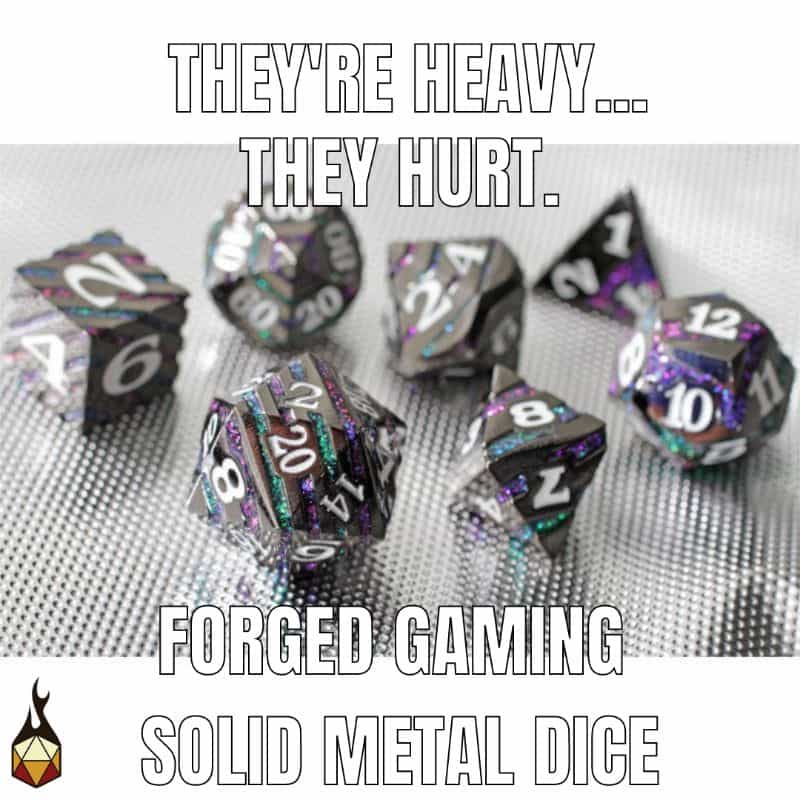
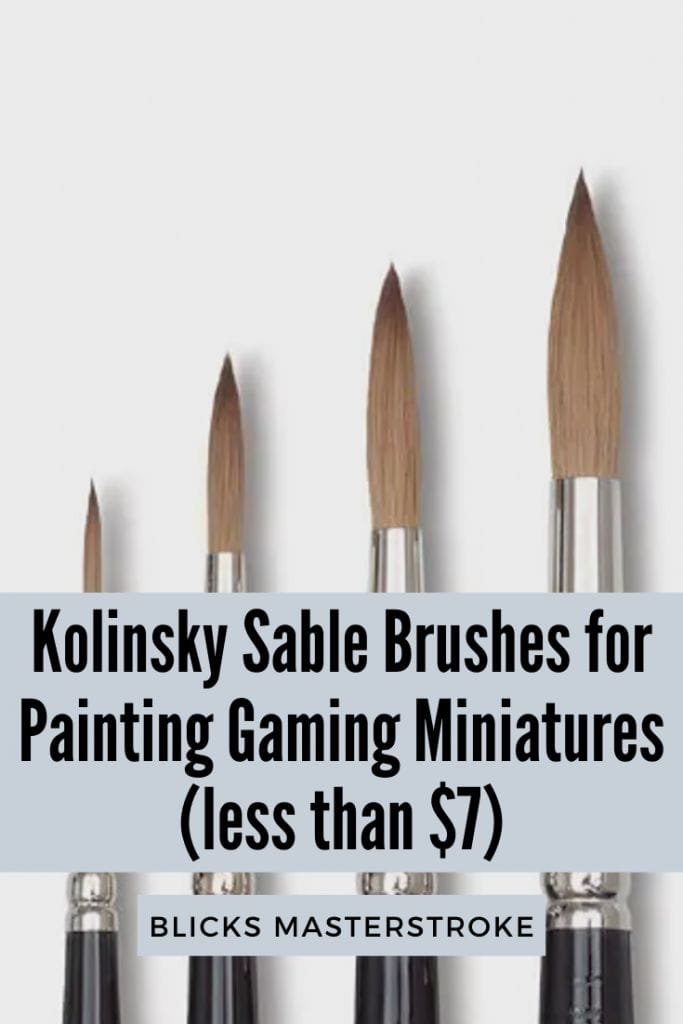
Tangible Day on YouTube (Miniatures and More!)
